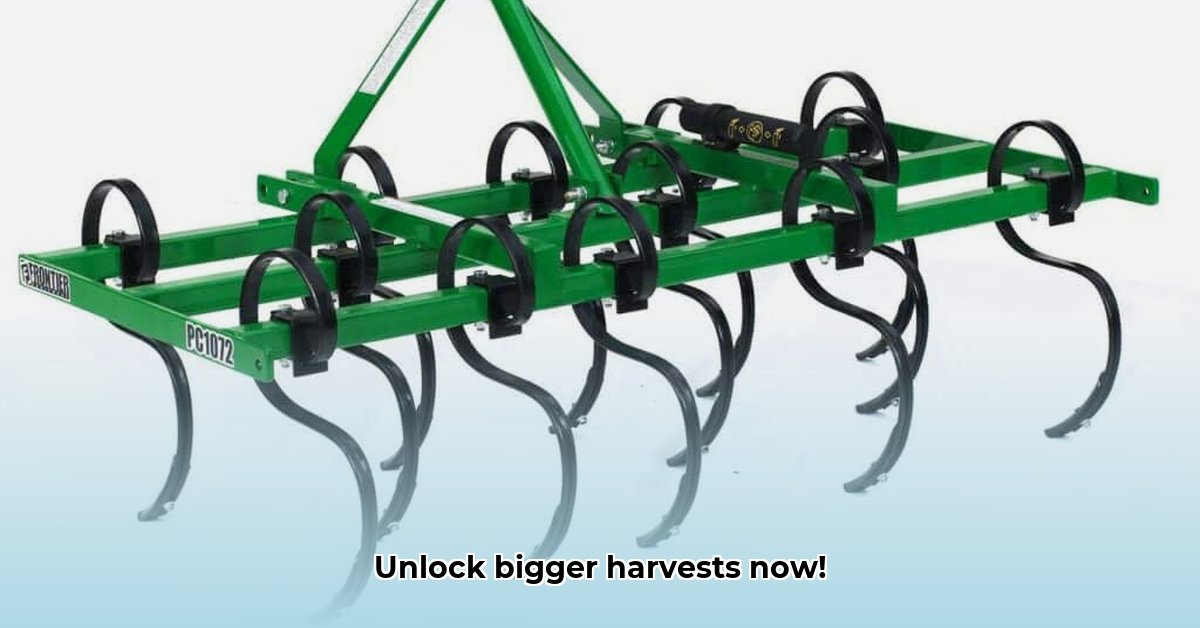
Choosing the right cultivator for your small farm significantly impacts yield and environmental sustainability. This guide helps you decide between rotary tillers and cultivators, considering farm size, soil type, crop needs, budget, and sustainability goals. For more information on small farm tractors, check out this helpful resource: small farm tractors.
Understanding Rotary Tillers: Deep Soil Preparation
Rotary tillers, also known as rotavators, thoroughly mix and aerate soil, creating a fine seedbed ideal for establishing new crops. They excel at breaking up compacted soil, providing a level planting surface. However, this intensive tillage can disrupt soil structure, leading to increased erosion and potentially harming beneficial soil organisms. Rotary tillers also consume more fuel than cultivators. Consider these trade-offs carefully: the benefits of thorough soil preparation must outweigh the risks of soil disturbance and higher fuel costs. Do you need the thorough soil mixing, or would a gentler approach suffice?
(Image: Rotary tiller in operation)
Cultivators: Targeted Soil Management
Cultivators offer a gentler approach to soil management, focusing on weed control and aeration without the deep mixing of a rotary tiller. They minimize soil disturbance, promoting better soil structure and reduced erosion. Several types exist, including tine cultivators and rolling cultivators. Tine cultivators use small tines to break up the topsoil, improving aeration and removing weeds. Rolling cultivators smooth the soil surface and control shallow weeds. While less effective on severely compacted soils or dense weed infestations, cultivators are more fuel-efficient and preserve soil health better. Will targeted weed control and aeration meet your needs, or is extensive soil preparation essential?
(Image: Tine cultivator and rolling cultivator in operation)
Choosing the Right Equipment: A Step-by-Step Guide
Selecting the right cultivator involves a careful assessment of your farm's specific needs. Follow these steps to make an informed decision.
Step 1: Assess Your Farm Size: Small farms usually benefit from the maneuverability and affordability of cultivators. Larger farms might need the efficiency of a rotary tiller, although they might require more powerful tractors to handle larger equipment.
Step 2: Analyze Your Soil Type: Heavy clay soils benefit from the thorough mixing of a rotary tiller to improve drainage and aeration. Lighter soils are often better suited to a cultivator to minimize disruption and erosion. What is the texture and compaction level of your soil?
Step 3: Consider Your Crop Type: Row crops generally work well with cultivators, which target weeds between rows without damaging the plants. Broadleaf crops might require the thorough initial tillage offered by a rotary tiller. What type of crops do you intend to grow?
Step 4: Set a Realistic Budget: New equipment offers warranties and the latest technology but costs more upfront. Used equipment is more affordable but might require increased maintenance. Carefully compare the initial cost, expected lifespan, and ongoing maintenance costs before making your decision. What is your budget for this investment?
Step 5: Prioritize Sustainability: Cultivators reduce soil disturbance, promoting better soil health and minimizing erosion compared to rotary tillers. Which approach aligns best with your long-term sustainability aims for your farm?
Maintenance and Operation: Ensuring Long-Term Performance
Regular maintenance prolongs equipment lifespan and ensures efficient operation. This includes regular cleaning, lubrication of moving parts, and sharpening or replacing tines or blades as needed. Always adhere to safety precautions, wearing appropriate protective gear and exercising caution around moving parts. What maintenance schedule will you follow to maintain optimal performance and safety?
Cultivator Resources: Expanding Your Knowledge
Your local agricultural extension office provides invaluable resources and advice tailored to your region and farming practices. Equipment manufacturer websites offer detailed specifications and operational guidelines. Government agencies may offer grants or subsidies to support sustainable agricultural equipment purchases. Consider searching out local and national resources to aid your decision.
Conclusion: Making the Right Choice for Sustainable Farming
Choosing the right small tractor cultivator depends entirely on your farm's unique needs, soil conditions, and cropping practices. By carefully evaluating your situation and using this decision-making framework, you can select the equipment best suited for maximizing yield while promoting sustainable farming practices. Remember to regularly evaluate your tillage practices and adapt your approach as needed to ensure ongoing soil health and long-term farm viability.